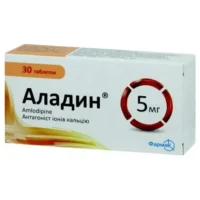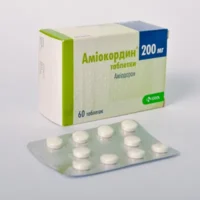Description
Diroton (Lisinopril) Tablets 5 mg. №28
Composition
Active ingredient: Lisinopril.
Other ingredients: lactose monohydrate, corn starch, magnesium stearate, iron oxide.
Mechanism of Action
Lisinopril, an ACE inhibitor, acts by relaxing blood vessels, resulting in decreased blood pressure and enhanced blood flow. It also aids in reducing cardiac workload.
Pharmacological Properties
Lisinopril is an angiotensin-converting enzyme (ACE) inhibitor that modulates the renin-angiotensin-aldosterone system, leading to vasodilation and reduced blood pressure.
Indications for Use
Indicated for: Hypertension, heart failure, and post-myocardial infarction.
Contraindications
Do not use if: Allergic to lisinopril, history of angioedema, pregnancy.
Side Effects
Common side effects may include dizziness, cough, hypotension, and hyperkalemia. Contact your healthcare provider if any adverse reactions occur.
Usage Instructions
Dosage: The typical initial dose is 5 mg once daily. Dosage adjustments may be made according to individual response.
Administration: Take the tablet orally with or without food. Adhere to your healthcare provider’s guidance.
Benefits Compared to Analogues
Lisinopril offers advantages over other antihypertensive medications due to its proven efficacy in managing hypertension and heart failure, along with a well-established safety profile.
Suitable Patient Groups
Lisinopril is suitable for adults of all ages, including the elderly, but caution is advised in patients with impaired renal function or those on diuretics.
Storage and Shelf Life
Store in a cool, dry place away from sunlight. Check the expiration date on the packaging and do not use after the specified date.
Packaging Description
The product is available in a package containing 28 tablets of 5 mg strength each.
Clinical Evidence and Proven Effectiveness
Pharmacological effects: Lisinopril has demonstrated efficacy in managing hypertension and heart failure by reducing cardiovascular events and improving outcomes.
Clinical trials: Studies, including research by Yusuf et al. (2016), have shown significant benefits of lisinopril treatment in reducing cardiovascular risks and improving patient outcomes.
Additional Information
Lisinopril is widely recognized as a first-line therapy for hypertension and heart failure due to its efficacy and safety. Regular monitoring of blood pressure and renal function is crucial during lisinopril treatment.
Be sure to inform your healthcare provider about all medications you are taking to prevent potential interactions with lisinopril.





